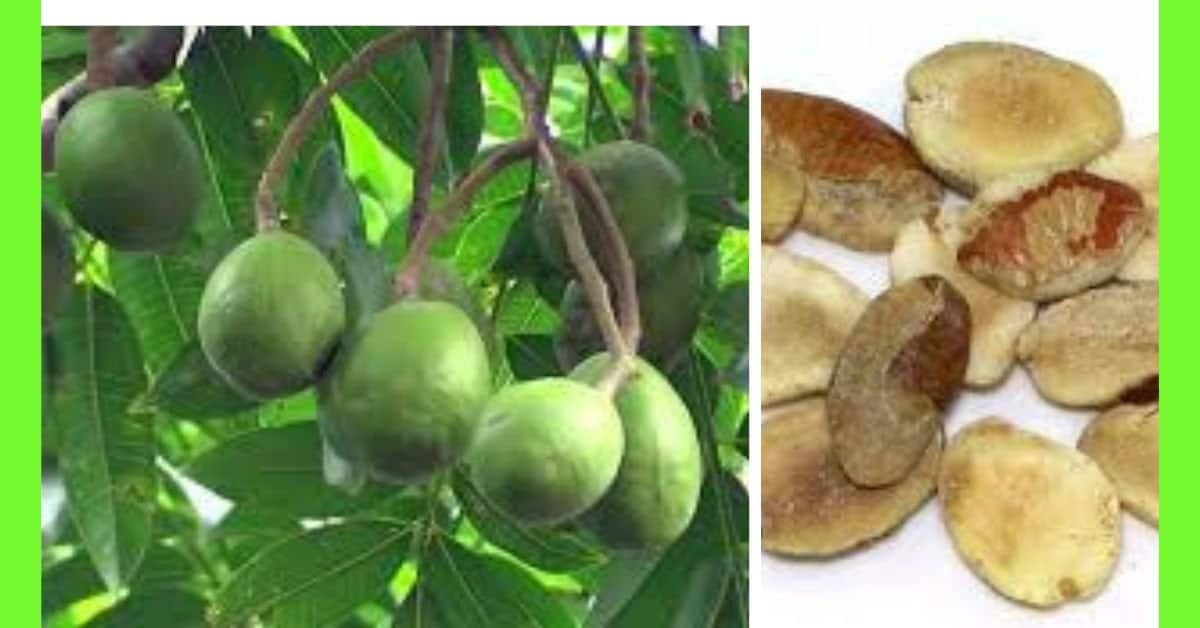- هذا الموضوع فارغ.
- الكاتبالمشاركات
- أبريل 3, 2025 الساعة 5:50 م #620351

Ogbono, scientifically known as Irvingia gabonensis, is a tropical fruit tree that produces a highly valued seed used in food and traditional medicine. The seed, commonly known as ogbono, is an essential component in many African dishes and has gained attention for its potential health benefits.
However, increasing the seed yield of ogbono trees has posed challenges due to suboptimal propagation methods and inadequate orchard management practices.
Optimizing ogbono seed yield is crucial for enhancing its availability and ensuring its sustainability in local and international markets. This article explores various improved propagation and orchard management techniques aimed at maximizing the seed yield of Irvingia gabonensis.
1. Improving Propagation Methods for Ogbono
Successful propagation is the foundation of any productive ogbono orchard. Traditionally, ogbono is propagated through seeds, but this method has some limitations, such as low germination rates and delayed tree growth.
To address these issues, several improved propagation techniques have been developed. Grafting and cutting propagation are increasingly used as alternatives to direct seeding. Grafting allows for the production of genetically superior seedlings, which can yield higher-quality seeds in a shorter time.
Furthermore, tissue culture techniques are being explored to multiply superior ogbono varieties rapidly. These advanced propagation methods help in ensuring that only the best genetic material is used for cultivation, ultimately resulting in a more productive orchard.
2. Optimizing Soil Fertility for Higher Seed Yields
The soil in which ogbono trees are grown plays a crucial role in their growth and seed production. Ensuring optimal soil fertility is key to increasing seed yield. Organic matter, such as compost and mulch, should be regularly added to the soil to improve its structure and nutrient content.
Additionally, soil testing should be carried out periodically to monitor nutrient levels and make necessary amendments.
Fertilizers, particularly those rich in nitrogen, phosphorus, and potassium, are vital for stimulating robust growth and fruiting. Proper soil management not only supports the tree’s growth but also ensures that the seed yield is consistently high year after year.
3. Irrigation and Water Management
Water is another critical factor in optimizing ogbono seed yield. While ogbono trees are generally drought-resistant, consistent watering is essential, especially during dry periods, to ensure good fruit set and seed formation.
Efficient water management practices, such as drip irrigation or the use of rainwater harvesting systems, can help in maintaining an adequate water supply. Additionally, over-irrigation should be avoided to prevent waterlogging, which can lead to root diseases and lower seed production.
Monitoring soil moisture levels and adjusting irrigation schedules accordingly can help in maintaining the right balance of water for optimal seed yield.
4. Pest and Disease Control in Ogbono Orchards
Pests and diseases are significant threats to the productivity of ogbono orchards. Regular monitoring of the trees for early signs of pest infestation or disease can help in taking timely preventive measures.
Integrated pest management (IPM) techniques, which include the use of biological control agents, cultural practices, and selective chemical applications, are effective in controlling pests without harming the environment.
Ensuring the health of the trees through proper pest and disease control methods not only protects the tree’s longevity but also contributes to higher seed yields by reducing stress and damage that can hinder seed formation.
5. Pruning and Canopy Management
Proper pruning and canopy management are essential in promoting healthy ogbono trees that produce high-quality seeds. Regular pruning helps to remove dead or diseased branches, improve air circulation, and ensure adequate sunlight penetration to the tree’s interior.
This practice not only encourages vigorous growth but also enhances the tree’s ability to produce more fruit, resulting in higher seed yield.
Additionally, managing the tree’s canopy size can prevent overcrowding, allowing the trees to grow more efficiently and support better fruiting. Effective canopy management is crucial for maximizing the overall productivity of ogbono orchards.
In conclusion, optimizing ogbono (Irvingia gabonensis) seed yield through improved propagation and orchard management techniques is vital for increasing the availability of this important crop. By employing modern propagation methods, enhancing soil fertility, managing irrigation, controlling pests and diseases, and practicing proper pruning and canopy management, farmers can significantly boost seed production.
As the demand for ogbono seeds continues to rise, these techniques will play a pivotal role in ensuring a sustainable and productive supply of this valuable resource. Through careful attention to these practices, the potential for ogbono cultivation can be fully realized, benefiting both local communities and global markets.
- الكاتبالمشاركات
- يجب تسجيل الدخول للرد على هذا الموضوع.

